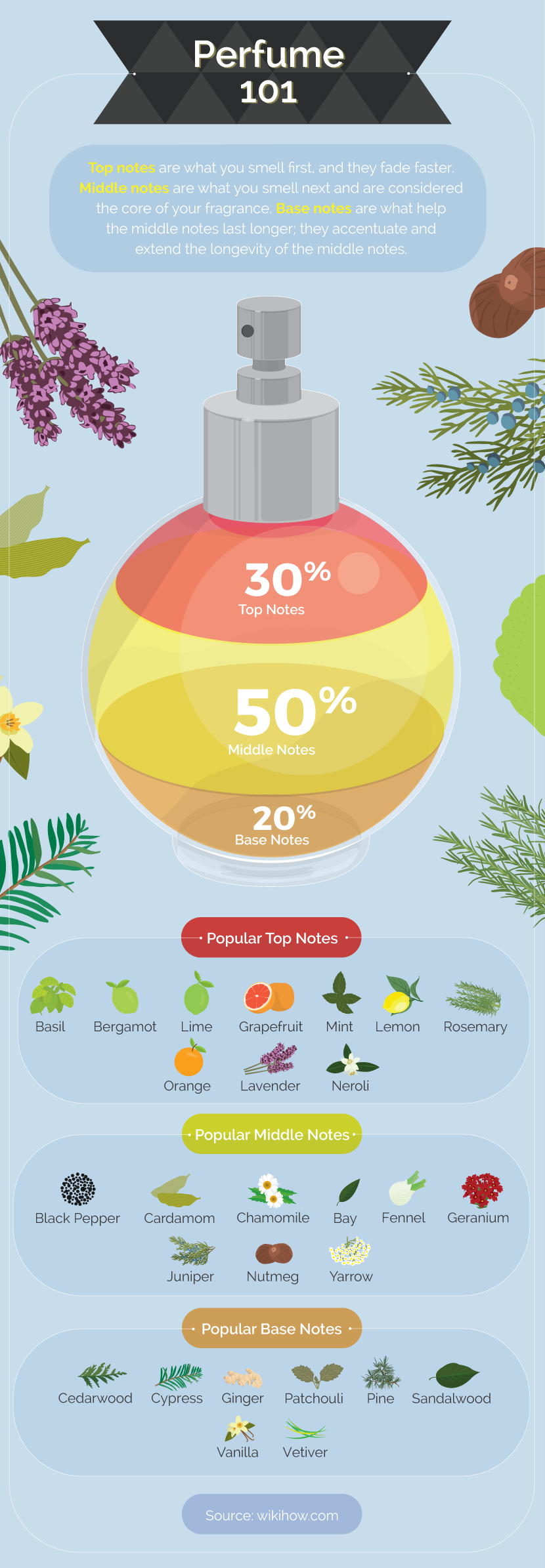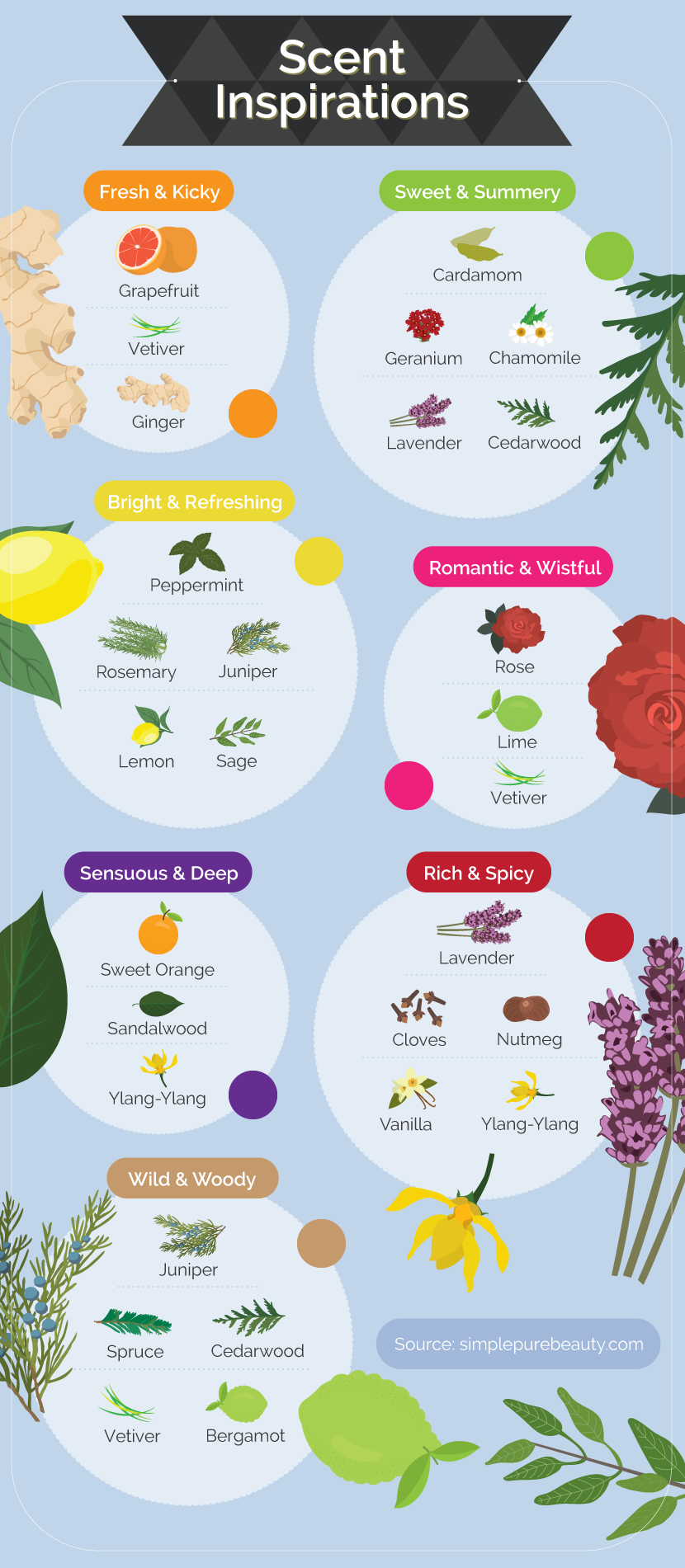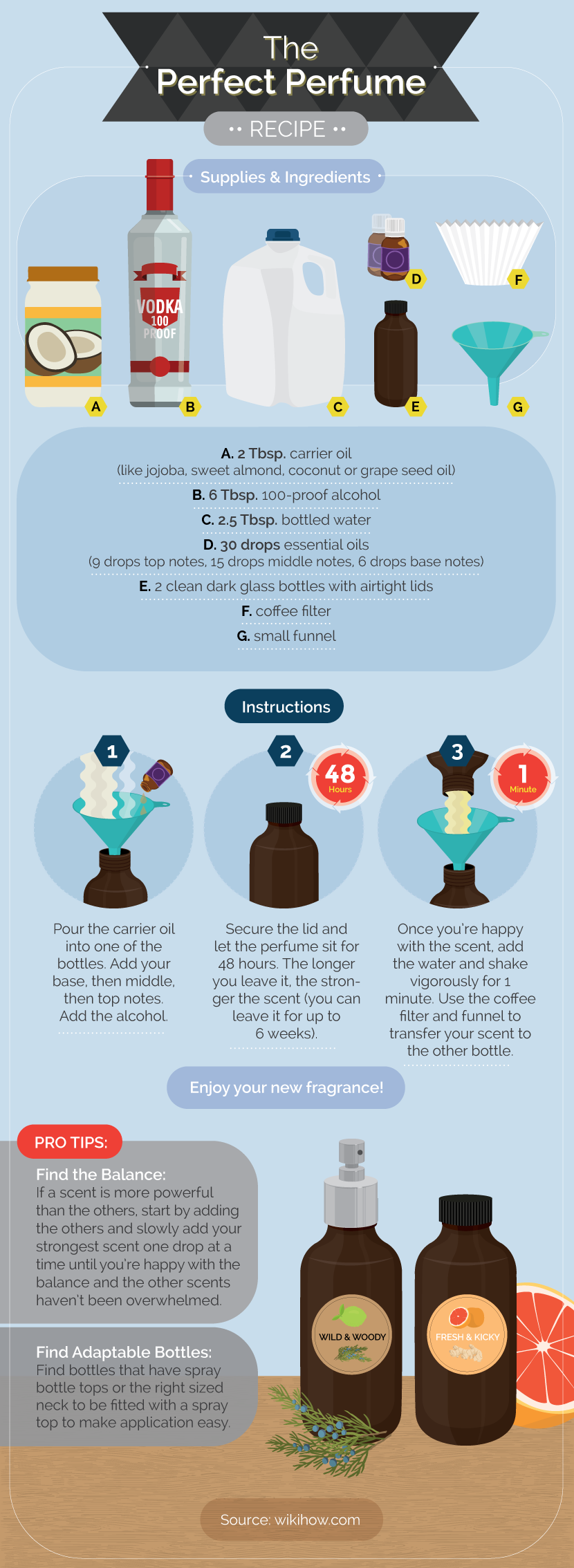I don’t think I’ve ever found the perfect perfume. Usually, by the time I’ve exhausted my capacity to sniff little strips of cardboard,
my nose is so overwhelmed I have no idea whether my decision to hand over so much money is the right one.
I like some scents more than others (fresh and light over musky) but there’s never been one that stands out, one that I feel is just right.
And it’s always more than I’d like to pay. How is it possible that this little bottle could be worth $100, anyway?
Making my own perfume was never something I considered an option until I did some research and found out that it’s actually not too difficult.
And the idea of having a scent I’ve created myself at a price that doesn’t give me sticker shock is a welcome one.
Scent is a powerful thing. It can evoke strong memories and emotions, positive and negative, and even change our level of attraction to the people around us.
Research has shown that our sense of smell is so powerful, in fact,
that we are 100 times more likely to remember something we smell than something we see, hear, or touch. Not surprisingly, then, the perfume industry is a thriving one.
All the more reason to adopt a DIY approach to perfume.
Perfume 101
Understanding how scents work together is the first step in building your perfect perfume.
A fragrance is made up of three types of scents in different proportions: top notes (30%), middle notes (50%), and base notes (20%).
Top notes are what you smell first, and they fade faster. Middle notes come next and are considered the core of your fragrance.
Base notes are what help the middle notes last longer; they accentuate and extend the longevity of the middle notes.
Popular top notes: basil, bergamot, grapefruit, lavender, lemon, lime, mint, neroli, rosemary, sweet orange.
Popular middle notes: black pepper, cardamom, chamomile, bay, fennel, geranium, juniper, nutmeg, yarrow.
Popular base notes: cedarwood, cypress, ginger, patchouli, pine, sandalwood, vanilla, vetiver.

Scent Inspirations
If you’re in need of a little inspiration to get started, here are some possible essential-oil scent combinations to try,
depending on your mood, personality, and personal preferences.
Fresh & Kicky – grapefruit, ginger, vetiver
Romantic & Wistful – rose, lime, vetiver
Sensuous & Deep – sweet orange, ylang-ylang, sandalwood
Sweet & Summery – lavender, chamomile, cardamom, cedarwood, geranium
Bright & Refreshing – peppermint, rosemary, lemon, sage, juniper
Wild & Woody – spruce, juniper, cedarwood, vetiver, bergamot
Rich & Spicy – lavender, clove, nutmeg, vanilla, ylang-ylang

The perfect perfume recipe
The hardest part of creating your own fragrance is deciding which scents you like best. Actually making the perfume is simple.
Though you can use original ingredients like flower petals, essential oils are the easiest route if you’re making perfume for the first time.
Ingredients:
- 2 tbsps carrier oil (like jojoba, sweet almond, coconut, or grape seed)
- 6 tbsps 100-proof alcohol
- 2.5 tbsps bottled water
- 30 drops essential oils (9 drops top notes, 15 drops middle notes, 6 drops base notes)
- coffee filter
- small funnel
- 2 clean dark-glass bottles with air-tight lids
Instructions:
- Pour the carrier oil into one of the bottles. Add your base, then middle, then top notes. Add the alcohol.
- Secure the lid, and let the perfume sit for 48 hours. The longer you leave it, the stronger the scent. (You can leave it for up to 6 weeks.)
- Once you’re happy with the scent, add the bottled water, and shake vigorously for 1 minute. Use the coffee filter and funnel to transfer your scent to the other bottle.
- Enjoy your new fragrance!
Pro Tips:
- If one of your scents is more powerful than the others, start by adding the others, then add your strongest scent one drop at a time until you’re happy with the balance, making sure the other scents haven’t been overwhelmed.
- Find bottles that have spray tops, or the right-size neck to be fitted with a spray top, to make application easy when you’re finished creating your perfume.

Follow Your Nose
Making your own perfume is a great way to save money, avoid potentially harmful chemicals, and tailor a scent just to your liking.
If you’re not sure where to start with picking your scents, many essential-oil companies offer beginner kits,
so you can get your hands on a wide selection and figure out what you like. Everyone is different, so just follow your nose!
Embed the article on your site

